5 trends in the computer industry in 2015
At CES 2015, we can see that most of the outstanding products come from laptops. Here are 5 trends that are expected to appear more on personal computer products in 2015.
It could be cheap Chromebook computers until the new operating system versions. Biometric security solutions along with the trend of using 4K screens, . All of these will change the overall landscape of computer technology in 2015.
1. The computers are thinner, lighter thanks to the fifth generation Intel Core i processor.
Hasswell - Intel's fourth-generation microprocessor, has been focused on power consumption by the company and has been developed on the Core M ( or Broadwell-Y ) generation of processors.
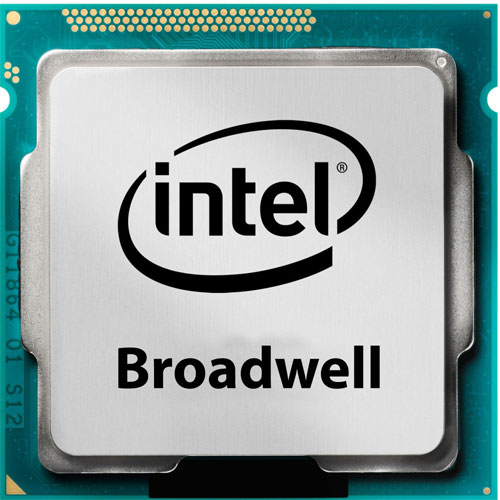
Broadwell chips use Intel's 14nm architecture
In addition to the low power consumption, Broadwell chips allow manufacturers to create generations of computers that do not use a fan. Thus, we see very thin and extremely light products.

Samsung Ativ Book 9
One such device is Samsung Ativ Book 9 Ultrabook, which was introduced at CES 2015 recently. Ativ Book 9 does not use a fan, so Ativ Book 9 has a thickness of only 10.9 mm and has a useful life of up to 10 hours in medium brightness.

The new Macbook Air generation is even thinner than previous Apple products
The manufacturer that always leads the market trend is Apple will not be outside this trend. Recent leaked information suggests that Apple will introduce its new generation of Air Retina Macbook computers with an ultra-slim design.
It is not clear whether Apple will use Core M processors or Broadwell U. Broadwell U chips manufactured by Intel based on 14 nm architecture bring similar advantages to Core M while processing performance is higher than i3 chips. , i5 and i7 before.
2. Windows 10 will make people forget Windows 8.
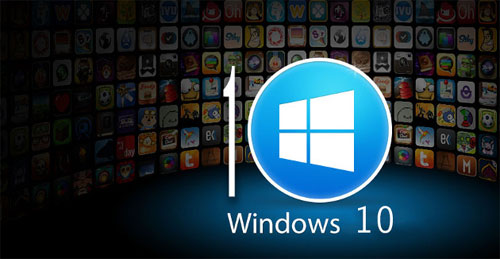
Windows 10 is the most anticipated operating system this year. The product is expected to help Microsoft regain user confidence after the birth of Windows four years ago, which is said to be unsuccessful.
However, it is not known whether Microsoft will charge Windows 10 licenses like previous versions or will switch to paid subscription support like on Office 365 today.
All questions will be answered by the company at Microsoft's event on January 21, where Microsoft plans to announce the features of Windows 10 for individual users. With the popularity of Android tablets, smartphones as well as low-cost Chromebooks in recent years, Windows 10 is under a lot of pressure to revive the personal computer market.
3. 4K screen technology is more widely applied, the game experience is more amazing.
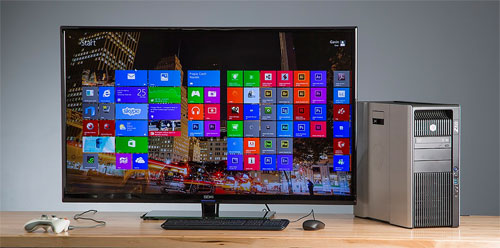
The price of 4K monitors has decreased significantly in 2014 and will continue to fall sharply this year. According to analysts, users can own a 22-inch screen with 4K resolution for only about $ 459 this year.
4K screen technology and displays this year will also switch to using HDMI 2.0 connectivity standard, so the image refresh rate is up to 60 Hz.
2015 is also expected to open a new era of screen lines using AMD's or Freevync's GSync technology to provide a smoother and more realistic gaming experience.
Typical products that have just appeared at CES 2015 include LG 34UM67 and Acer XB270HU, in which Acer's model owns GSync feature, super fast 144Hz refresh rate and use of IPS panels - a combination great.
4. Chromebooks and cheap computer models become more popular.
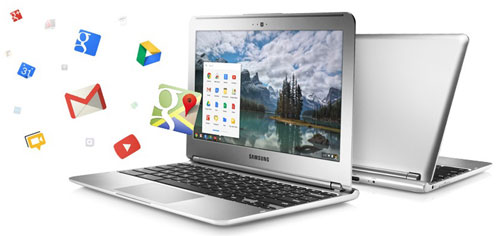
Laptop models using Google's Chrome OS have yet to be a threat to traditional PC laptops because the platform is heavily dependent on the Internet and limits many functions. However, Chromebooks are still gradually expanding the market, especially the education and business markets.
At CES 2015, Acer launched Chromebook 15 - the first computer running Chrome OS and this proves that manufacturers still plan to develop Chromebooks according to new directions in 2015.
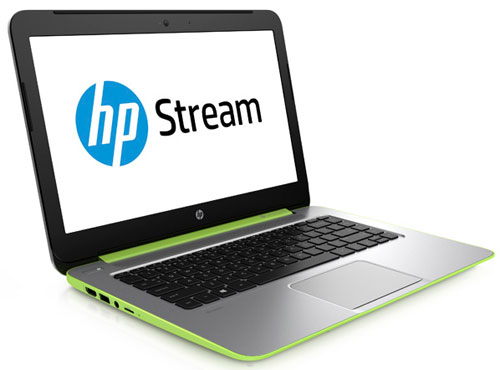
The HP Stream laptop running Windows was released last year
The advent of Chromebook is said to be one of the reasons why Windows laptop manufacturers have to offer more competitive prices. And perhaps it's time for them to do it, such as the end of 2014, which saw the launch of the low-cost HP Stream Windows 8.1 laptop, which is said to be a potential rival to Chromebooks.
5. Biometric technology will appear on laptops.
If on the smart phones, biometric sensors ( fingerprint sensors ) have become a trend when many manufacturers bring this technology to their products, the personal computers also do not must be an exception.
Intel is researching a series of computer security initiatives based on biometric technology. There is a concept called YAP, short for the phrase ' you are the password '. Accordingly, this method will allow users to authenticate by using fingerprints, voices or face recognition.
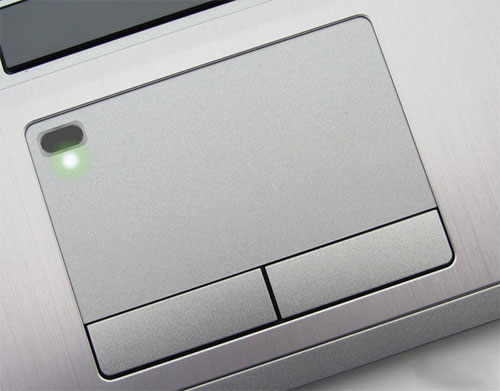
SecurePad solution
In December 2014, US firm Synaptics introduced a SecurePad solution that allows users to log on to their laptop via a fingerprint scanner that is integrated directly into the touchpad surface based on the authentication standard called Fido.
Synaptics claims that their SecurePad solution is more affordable when it comes to integrating scanning devices compared to using a separate scanner placed outside the touchpad. This technology will also be more feasible for computer manufacturers to include biometric authentication sensors on laptops in the future.
You should read it
- Samsung Ativ Book 9 super-sharp screen costs from 1,400 USD
- Revealed Samsung Ativ Book 6
- Samsung launched ATIV Book 9 version 2015
- Samsung announced the price of ATIV Book 9 Plus
- Samsung announced the price of ATIV Book 9 Lite
- Samsung's ultra-thin laptop costs from VND 41 million
- 13-inch MacBook Pro Retina may come out in September
- Chromebook screen better than MacBook Pro Retina revealed
May be interested
- MacBook Air 12 'Retina has started to be mass-produced?
 according to digitimes, quanta computer, a taiwanese electronics manufacturing company, began mass-producing macbook air 12 retina on apple's orders.
according to digitimes, quanta computer, a taiwanese electronics manufacturing company, began mass-producing macbook air 12 retina on apple's orders. - 7 note when using and storing laptops during breaks
 in order to avoid the risk of loss or damage when using a laptop, we would like to introduce important technical notes to customers and customers, to avoid problems with laptops, causing problems. nuisance affects progress and work efficiency.
in order to avoid the risk of loss or damage when using a laptop, we would like to introduce important technical notes to customers and customers, to avoid problems with laptops, causing problems. nuisance affects progress and work efficiency. - Acer launched two new high-strength Chromebooks for students
 acer's new pair of chromebook laptops is aimed at student users, specifically designed to withstand the bumps or falls from above that are common problems in school environments. .
acer's new pair of chromebook laptops is aimed at student users, specifically designed to withstand the bumps or falls from above that are common problems in school environments. . - Are these images of the MacBook Air Retina 12 '?
 ifanr has just posted a number of images that are said to be the new macbook air 12, a compact and retina-powered computer that has been rumored extremely recently.
ifanr has just posted a number of images that are said to be the new macbook air 12, a compact and retina-powered computer that has been rumored extremely recently. - The face of 10 laptop 'genuine' worth buying the most today
 the year 2014 saw the strong development of chromebooks as well as apple's leading position, and earlier this year dell also took the opportunity to release the first laptop to use its broadwell chip.
the year 2014 saw the strong development of chromebooks as well as apple's leading position, and earlier this year dell also took the opportunity to release the first laptop to use its broadwell chip. - Panasonic refreshed the Toughbook 31 series with Broadwell chips
 panasonic has just refreshed its toughbook 31 series of high-end laptops with the intel core fifth-generation processor (broadwell) and that helped the device get up to 18 hours of battery life.
panasonic has just refreshed its toughbook 31 series of high-end laptops with the intel core fifth-generation processor (broadwell) and that helped the device get up to 18 hours of battery life.






 Top 6 outsourcing trends will change IT industry by 2018
Top 6 outsourcing trends will change IT industry by 2018 Google Trends: Discover what the world is looking for?
Google Trends: Discover what the world is looking for? 4 Most Anticipated AI Trends in 2025
4 Most Anticipated AI Trends in 2025 World tourism development trends in 2025
World tourism development trends in 2025 Nutrition & Food Consumption Trends of 2025
Nutrition & Food Consumption Trends of 2025